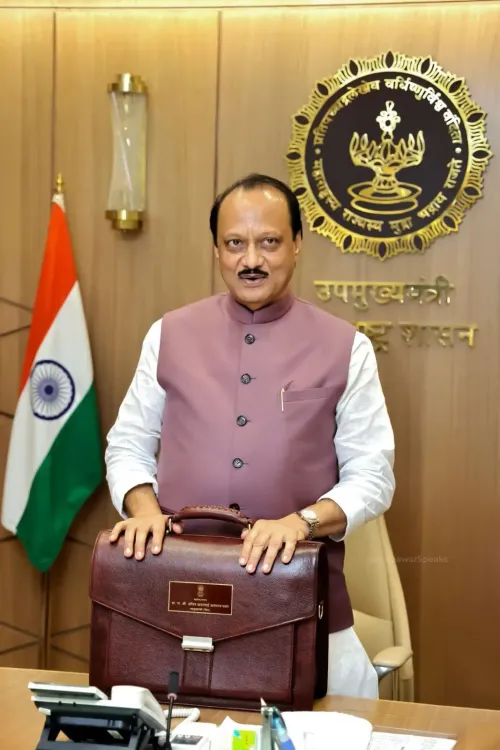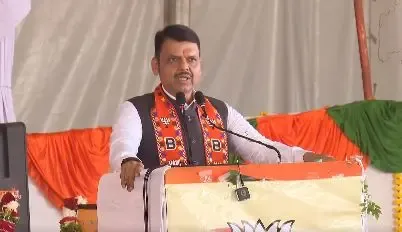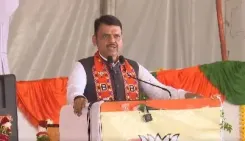Maharashtra Budget: Rs 36,000 Crore for Ladki Bahin Yojana; New Taxes Proposed for Revenue Generation

Synopsis
Key Takeaways
- Rs 36,000 crore allocated for Ladki Bahin Yojana.
- Revenue deficit estimated at Rs 45,892 crore.
- Fiscal deficit projected at Rs 1,36,000 crore.
- New taxes proposed to generate Rs 1,125 crore.
- Focus on sustainable development in agriculture and infrastructure.
Mumbai, March 10 (NationPress) In light of the increasing disparity between revenue and expenditure and challenges in resource mobilization, Maharashtra's Deputy Chief Minister and Finance Minister Ajit Pawar unveiled the budget for 2025-26, highlighting an estimated revenue deficit of Rs 45,892 crore and a fiscal deficit of Rs 1,36,000 crore.
The finance minister has projected a total expenditure of Rs 7,00,020 crore, with revenue receipts anticipated at Rs 5,60,963 crore and revenue expenditure at Rs 6,06,855 crore.
Despite this, Ajit Pawar asserted that the government has managed to maintain the fiscal deficit below 3 percent of gross state domestic income as per the Fiscal Responsibility and Fiscal Management Act. Additionally, the revenue deficit has remained consistently below 1 percent of gross state income.
However, he did not announce an increase in the monthly financial support to Rs 2,100 from Rs 1,500 for around 2.53 crore women beneficiaries under the flagship Ladki Bahin Yojana, as had been promised in the poll manifesto. Since the scheme's inception, the government has expended Rs 33,232 crore. For the fiscal year 2025-26, the finance minister has allocated Rs 36,000 crore and introduced special initiatives to motivate women groups in utilizing the subsidy. Additionally, he refrained from announcing the farm loan waiver as previously pledged in the manifesto.
A scheme titled the Maharashtra Settlement of Arrears of Tax, Interest, Penalty or Late Free Act 2025 has been proposed as an amnesty for public sector undertaking companies to settle their dues. This scheme will be valid until December 31, 2025.
To compensate for revenue losses, the finance minister has suggested several tax reforms expected to yield an additional Rs 1,125 crore. This includes a 1 percent rise in Motor Vehicle Tax for individual non-transport four-wheeled CNG and LPG vehicles, anticipated to raise Rs 150 crore.
Furthermore, a 6 percent motor vehicle tax is proposed for electric vehicles priced above Rs 30 lakh, with the maximum tax limit set to increase from Rs 20 lakh to Rs 30 lakh, projected to generate around Rs 170 crore.
The finance minister has also suggested a compulsory 7 percent motor vehicle tax on construction vehicles, which is expected to mobilize an additional Rs 180 crore.
Additionally, a 7 percent tax will be levied on Light Goods Vehicles carrying goods up to 7,500 kg, aiming to generate Rs 625 crore.
Other proposed changes include increasing stamp duty from Rs 100 to Rs 500 for supplementary documents in a single transaction and raising the adjudication fee from Rs 100 to Rs 1,000 under section 3(1) of the Maharashtra Stamp Act.
A new provision for e-Stamp Certificates will facilitate online payments for stamp duties and certificate issuance.
This was the inaugural budget of the MahaYuti government following its overwhelming victory in the state Assembly elections, marking Ajit Pawar’s 11th budget presentation as the state's finance minister.
Allocations include Rs 1,90,242 crore for annual outlays, Rs 22,568 crore for scheduled caste component programs, Rs 21,495 crore for tribal component programs, and Rs 20,165 crore for district development plans, with a total allocation of Rs 1,90,242 crore across various departments.
The finance minister has framed the budget around the slogan Viksit Bharat Viksit Maharashtra, indicating a roadmap for sustainable and inclusive state development through investments in agriculture, irrigation, infrastructure, industry, and social sectors.
While initially estimating the state’s own tax revenue at Rs 3,43,040 crore for 2024-25, it has been revised upward to Rs 3,67,467 crore. The budget estimate for 2025-26 anticipates a revenue of Rs 3,87,674 crore.
Key budget highlights include a focus on a higher economic growth rate through strategic reforms and capital expenditure with significant fiscal multipliers.
Projects in the MMR are set to position it as an economic growth hub for India, with priority given to developments in transport—highways, ports, airports, waterways, public transport, railways, and metros.
The Industrial Policy 2025 aims to attract fresh investments and promote the ‘make in Mh’ initiative, with substantial backing for rural roads, state highways, and district roads.
For rural housing, the largest scheme outlay of nearly Rs 15,000 crore aims to achieve a target of 20 lakh homes. Significant increases in SCP, TSP, and General Plans will ensure adequate provisions for new initiatives while phasing out outdated schemes, all while adhering to current FRBM norms—keeping fiscal deficit and debt in line with GSDP limits.
The DBT mode will enhance speed, efficiency, and transparency in implementing individual beneficiary schemes, maximizing participation in CSS and bringing in more central funds. Agricultural growth estimates have improved to 8.7 percent for 2024-25, up from last year’s 3.3 percent, thanks to the state's support for farmers.
Ongoing assistance is aimed at boosting farmers' incomes, enhancing value addition, and income from allied sectors.
Support for meeting energy demands through solar and irrigation will accelerate growth in the agricultural sector.
Support for cultural heritage has been increased, with budget allocations for projects like Sambhaji Maharaj and aquatic tourism across Maharashtra.
Sports have received focused attention through policies and budgetary support to develop infrastructure and aid athletes.
In the food and civil supplies sector, enhanced transparency will be achieved via smart PDS and blockchain technology.
The Cooperation Year celebration will underline Maharashtra's leadership in financing through asset monetization, rationalization, central assistance, external aided projects, and innovative solutions like Maha InvITs.
Healthcare initiatives aim for accessibility within 5 km and a new state policy, while educational support focuses on implementing the NEP and increasing girls' involvement in professional and technical education.
Efforts to improve court infrastructure aim to expedite the legal case disposal process.









